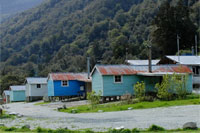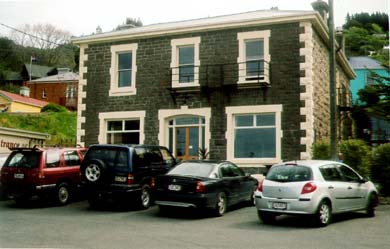I read this great article in the Sunday paper and thought I'd share...
Why the Secret to Dieting is all in the Mindby Rachel Anne Hill
THE "no-diet" diet, as featured in Esther Blum's latest book, Eat, Drink, And Be Gorgeous, has already earned the confidence of many celebrities, including Sarah Jessica Parker, Sharon Stone and Teri Hatcher, and is now becoming the hottest thing in the US. Instead of punishing eating and exercise regimes, the "no-diet" diet encourages women to eat and drink whatever they want. There are no diet plans to follow, no foods to avoid and no kilojoule counting. The "no-diet" diet is all about freeing you up to enjoy eating and drinking while still getting the results you want. Follow these five steps to find out how.
1 TAKE BACK THE CONTROL
"It's time to stop the insanity," says Blum. "We've become so used to following strict diets that we've lost the ability to make our own eating and drinking decisions, so throw away your diet books and wipe the slate clean.
"Learn to trust your own judgment. We don't need other people to define our hungers and appetites. We know what our bodies need. We can create our own rules and we do not need others to tell us what to do. We simply need to allow ourselves the time and space when we do eat to acknowledge when we've had enough."
2 FILL UP ON FUN
"A healthy lifestyle has to be as enjoyable as possible," says Blum.
"If you approach eating and exercise with passion and creative energy, you carry that enthusiasm across all realms of your life. So forget pounding the treadmill when what you'd really like to do is dance."
And on the "no-diet" diet the same rules apply to food. Blum believes food is one of life's greatest pleasures and is there to be enjoyed. "Try new things," she says.
"Eat a greater variety of different foods and give yourself permission to eat whatever you want. This may sound dangerous, but in doing so we empower ourselves to have control over what we eat rather then letting the food control us!
"Suddenly the fear of 'I'll never be satisfied' gets replaced with 'That's all I need for now and I can always have more'.
"Similarly, when we allow ourselves to have anything in moderation, food begins to lose its power over us and we find those foods we always craved are no longer as irresistible."
3 DON'T PLAY THE SHAME GAME
Years of strict diets and books listing all the "good" and "bad" foods have left many of us experiencing feelings of guilt around food. But Blum believes "guilty eating" is like carrying around a sack of bricks.
"It feels far better when you put it down! Lighten up on yourself because, as soon as you do, your body begins to lighten up, too.
"Eating a healthy diet isn't about perfection; it's about progress and fostering an empowered relationship with food and exercise."
4 UNDERSTAND WHY YOU EAT
"When you want to eat and you're not hungry, ask yourself, 'What's really going on here?' Keep a food diary for five to seven days.
Track your hunger levels before and after eating and write down how you were feeling when you ate. Soon you'll notice when you are eating to satisfy an emotional need rather than a physiological one.
"Address the real reasons for any emotional eating you may be doing and, if necessary, put other, non-food rewards in place, such as having a bubble bath, going for a walk or calling a friend."
5 VEG OUT AND CURB YOUR CARBS
While Blum doesn't advocate strict eating regimes, she does recommend making a few slight alterations to what is considered best nutritional practice at the moment.
Current healthy eating guidelines still advocate a diet based on carbohydrates; they don't, however, differentiate between processed and unprocessed carbs.
Blum believes this is a mistake and that to maximise our intake of essential vitamins, minerals and fibre we should focus on choosing unprocessed carbohydrates, such as beans, pulses, corn, brown rice and root vegetables, over processed ones such as pasta, white rice, cereals, noodles and breads.

























